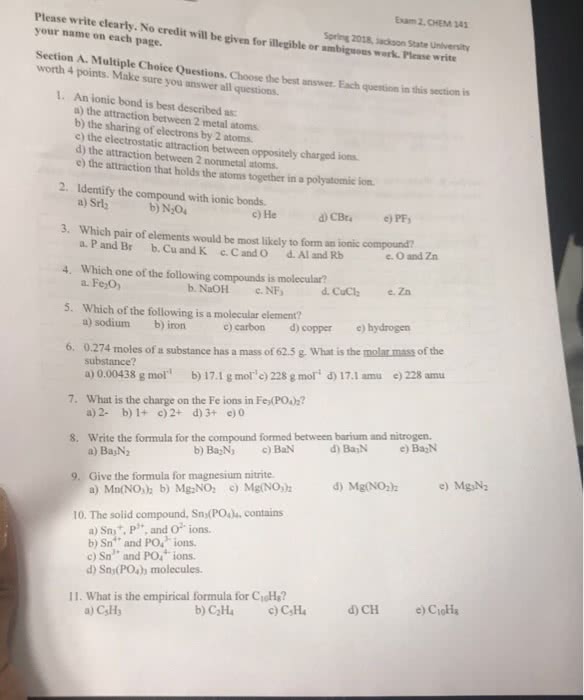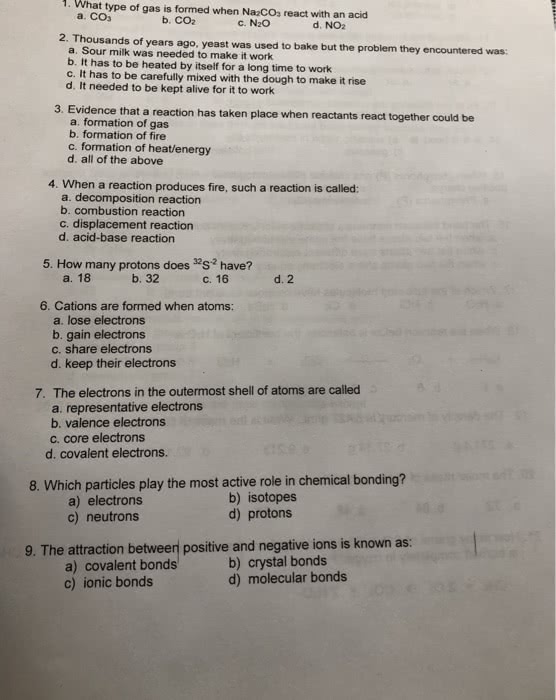CH-1010 Chapter Notes - Chapter 4: Electronegativity, Single Bond, Double Bond
Document Summary
Valence: the capacity of the atoms of an element to form chemical bonds. Ionic bond: a bond resulting from the electrostatic attraction of a cation for an anion. Lattice energy (u): the energy released when 1 mole of an ionic compound forms from its free ions in the gas phase. Crystal lattice: an ordered three-dimensional array of particles. Covalent bond: a bond created by two atoms sharing one or more pairs of electrons. Bond length: the distance between the nuclear centers of two atoms joined together in a bond. Bond energy: the energy needed to break 1 mole of a particular covalent bond in a molecule or polyatomic ion in the gas phase; also called bond strength. Metallic bond: a bond consisting of the nuclei of metal atoms surrounded by a sea of shared electrons. Polyatomic ion: a charged group of more than one kind of atom joined together by covalent bonds.




